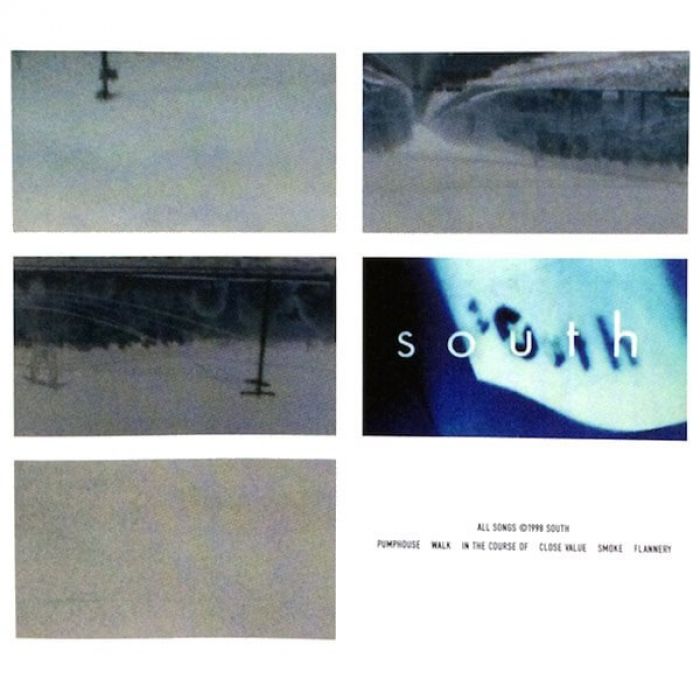
One thing that really bothers me is when bands state that they’re trying to create an “original sound.” If you have to say it, chances are you’re not doing it. Everyone is influencing and influenced by everyone. There is no shame in doing that, especially when you’ve got a fine pedigree.
It’s easy to chart the musical terrain that South covers on their self-titled album: Just follow post-rockers like Labradford and Tortoise, shoegazers like Slowdive, and minimalists like Steve Reich. Sounds too good to be true, huh? It’s obvious where South gets their sound from. Now, at times it gets a little too obvious, especially with the vocals that come straight out of a Bark Psychosis album. You know what I mean, those breathy whispering vocals that every neo-shoegazer/postrock vocalist employs.
But that’s a minor deal, because the music is just so good. Imagine Steve Reich’s Music for Eighteen Musicians (South claims this as a direct influence) condensed into an indie-rock form. Yeah, you heard me. For the most part, South is your average indie trio, but as the melodies unfurl and slip around, inside, and through each other, it becomes obvious that they’re more than a white-bread three chord group. The beauty of South’s music lies in its repetition. Jason Spaceman (Spiritualized) once said that all he wanted to play were three notes, but the most beautiful three notes he could find. South have found their three notes.
Like Music for Eighteen Musicians, the music is constantly shifting, polarizing, like watching the shadows on your wall move with the wind. “In The Course Of” starts off slowly enough, with a sliding acoustic guitar and rolling bassline accentuated with vibes and a shuffling drumbeat. But in the course of (npi) this 8-minute song, melodies and notes are constantly discarded, exchanged for more melodies and notes that are even more lovely. “Smoke” starts of the same way, until it all gives away to a reverbed hall of beauty, while more glassy drones are filtered through the spaces in the loops. The disc closes with “Flannery,” where dulcimer and vibraphones drenched in reverb sound like some underwater journey.
This is one of those albums that re-excites me about music, that it’s possible to synthesize all of your influences and still create something that, while firmly anchored to those who have come before, still plots a fairly nice course for yourself. My hat’s off to South, and here’s hoping they keep moving forward into that spacious country.